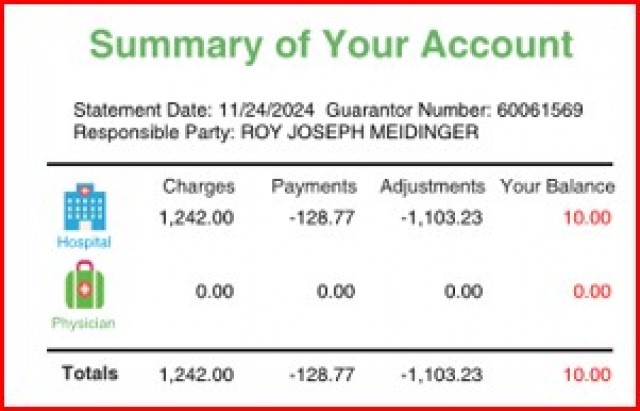It’s Time to Act: Contact Congress and Stop the Provider–Insurance Kickback Fraud
(Isstories Editorial):- Fort Myers, Florida Oct 9, 2025 (Issuewire.com) – The federal government is shut down today, stalled by a fierce political battle over healthcare spending. One party is demanding cuts to government-funded medical programs for low-income Americans. The other refuses to compromise, insisting on full support for vulnerable populations–regardless of the cost.
More on Isstories:
- Top Industrial Safety Trends from SONICE — China’s Leading Industrial Gloves Supplier
- From Concept to Creation: Custom Sports Sunglasses Manufacturing for International Brands
- Shipping Container Expandable House Exporter Leading Innovation – Liansheng Spotlight
- SCO Expo 2025 Highlights Detachable Modular Container Houses From Liansheng
- Global Leading PVC Tarpaulin Supplier Linyang Highlights Sustainable Solutions at the 9th South Africa BDEXPO
However, beneath this political standoff lies a deeper, long-neglected issue: the skyrocketing cost of healthcare in the United States. Fixing that core problem could resolve both sides’ concerns–controlling spending while preserving access to care.
To understand how we arrived at this point, we need to look back.
In 1982, Medicare adopted the Prospective Payment System, setting fixed rates for groups of medical diagnoses. Providers were incentivized to lower costs and pocket the difference. However, the system also created opportunities for financial manipulation–most notably, through a practice known as the “negotiated fee.”
Under this scheme, providers billed patients one amount but accepted a lower payment from insurers in exchange for referring patients to them. The difference–known as a “contractual adjustment” was written off, never reported as income, and used to hide the actual value of services provided.
This manipulation distorted healthcare pricing and fueled rapid cost increases. For decades, U.S. healthcare costs have grown about 2% faster than inflation. Today, about 88% of the average medical bill is effectively written off–“cancelled debt” that hides real profits and inflates the system. The result: U.S. healthcare now costs three times more than in other industrialized nations, despite offering comparable or worse outcomes.
In 2010, this issue was reported to the IRS. Nothing happened.
Then in 2014, an IRS Chief Counsel Advisory (CCA 20151101F) quietly confirmed what the law has said all along: these contractual adjustments are not valid tax deductions. Under longstanding tax rules, including Supreme Court precedent from Spring City Foundry Co. v. Commissioner (1934), providers must recognize the full billed amount as income. Any reduction is a form of debt cancellation–and taxable.
In short, “negotiated fees” are not real–they are disguised kickbacks.
Despite this legal clarity, the IRS never enforced the ruling. The result has been decades of unchecked tax evasion, hidden pricing schemes, and an inflated healthcare industry that has reshaped the entire U.S. economy.
Consider the fallout:
- Healthcare’s share of GDP has ballooned by 14%.
- Manufacturing, once the backbone of the U.S. economy, has collapsed–from 25% of GDP in 1965 to just 11% today.
- As production declined, the U.S. trade deficit exploded–now over $1.3 trillion.
- The national debt has soared past $37 trillion, fueled in part by a tax system that allows powerful institutions to avoid billions in owed revenue.
This is more than an economic crisis–it’s a threat to national stability. The continued use of hidden discounts, illegal patient-steering payments, and false “adjustments” violates tax and antitrust laws, drains public resources, and undermines trust in both government and healthcare institutions.
Suppose we are to restore fiscal balance and rebuild the productive base of the American economy. In that case, we must confront the real cause of rising healthcare costs: the systemic abuse of a rigged pricing and tax structure.
This article presents data, charts, and legal analysis that expose how a silent failure of enforcement allowed one industry to dominate the economy–at the expense of national prosperity. It is a call to lawmakers, regulators, and citizens alike: the path forward begins with the truth.
Closing: What We Must Do to Restore the American Economy
If these abuses are allowed to continue, the United States will remain trapped in a self-inflicted cycle: rising healthcare costs, declining manufacturing, expanding debt, and permanent trade deficits. The economic engine that once built the world’s most powerful nation will continue to erode beneath the weight of unearned profits, secret rebates, and government inaction.
To recover our nation’s strength, we must act decisively:
1. Enforce the IRS Chief Counsel’s position in CCA 20151101F — require all healthcare providers and insurers to report billed amounts as taxable income and treat “contractual adjustments” as debt-cancellation income.
2. End illegal kickbacks and steering arrangements that destroy price transparency and violate the Sherman Act and Anti-Kickback Statute.
3. Rebuild America’s wealth-creating industries, especially manufacturing, by lowering employer costs through universal healthcare reform and eliminating the hidden tax of private medical contracting.
4. Shrink the overgrown service sector, particularly the healthcare and insurance monopolies that drain wealth rather than create it.
5. Eliminate the trade deficit and reduce the national debt through renewed production, fair taxation, and restoration of competitive industry.
The future of the United States depends on confronting this deception head-on. Enforcing the Tax Code and restoring integrity to the healthcare system are not merely fiscal reforms — they are acts of economic patriotism. Only by holding the healthcare industry to the same legal standards as every other sector can we rebuild our manufacturing base, restore balance to our economy, and free the nation from debt dependency.
Wealth-Creating vs Service-Based Industries in the U.S. Economy
This report compares industries that create long-term wealth by producing capital goods and intellectual property, versus those that primarily provide services that redistribute or consume wealth. Based on 2024 estimates, roughly 48% of U.S. GDP comes from wealth-creating industries, while 52% is service-based.
Economists often divide economic activity into wealth-creating industries (where something tangible or lasting is produced, adding to national capital) versus service-providing sectors (which circulate or consume wealth but don’t necessarily expand the stock of assets). Here’s a breakdown with estimates:
Industries That Primarily Create Wealth
These sectors convert raw materials, labor, and innovation into physical assets or intellectual property that endure beyond immediate consumption.
- Manufacturing
- Produces durable goods (cars, electronics, machinery).
- S. share of GDP: ~11% (2024).
- Wealth creation: High, since products can be exported, stored, and reinvested.
- Agriculture & Food Production
- Creates value by turning natural resources into consumable goods.
- S. GDP share: ~1% directly, but >5% when including food processing.
- Wealth creation: Medium to high–farmland itself is a lasting capital asset.
- Mining, Oil & Gas, and Energy
- Extracts natural resources, transforms them into power or industrial inputs.
- GDP share: ~6%.
- Wealth creation: Strong, though finite resources mean depletion risk.
- Construction & Real Estate Development
- Creates lasting infrastructure, housing, and commercial properties.
- GDP share: ~4% (construction) and ~13% (real estate).
- Wealth creation: High–structures increase national asset base.
- Technology & Intellectual Property (Software, R&D, Patents)
- Produces intangible but tradable assets (software, designs, patents).
- GDP share: ~9% (information sector).
- Wealth creation: High, because intellectual property can generate recurring value.
Industries That Primarily Provide Services
These sectors support, facilitate, or redistribute wealth but don’t usually create new capital assets.
- Healthcare
- GDP share: ~17-18% (largest U.S. sector).
- Service: Provides critical health services but consumes wealth (doesn’t generate capital goods).
- Note: Can protect productivity, but structurally drains wealth when costs outpace outcomes.
- Finance & Insurance
- GDP share: ~8%.
- Service: Allocates and transfers wealth, but critics argue it often extracts more than it creates.
- Wealth creation: Low–except when financing productive investments.
- Retail & Wholesale Trade
- GDP share: ~11%.
- Service: Moves goods from producers to consumers, doesn’t create new capital.
- Government Administration
- GDP share: ~12-13%.
- Service: Provides regulation, defense, and public goods–necessary, but not wealth-creating in itself.
- Education
- GDP share: ~6%.
- Service: Builds human capital, which indirectly creates wealth–but output is intangible.
- Tourism, Entertainment, Arts, Hospitality
- GDP share: ~4-5%.
- Service: High consumer value but primarily redistributes spending.
Summary:
- Wealth-Creating Core (~45-50% of GDP): Manufacturing, construction, energy, agriculture, and technology.
- Service-Based (~50-55% of GDP): Healthcare, finance, retail, government, education, tourism.
A nation’s long-term prosperity depends on the balance: if service sectors expand while wealth-creating sectors shrink (as has happened in the U.S. since the 1970s), debt grows, and real wealth declines.GDP Share by Sector – See Bar Chart
The bar chart below highlights the relative GDP share of each primary industry sector in 2024. The chart illustrates the estimated distribution of U.S. GDP across major sectors for 2024. Healthcare and Construction/Real Estate are the most significant contributors, together making up over one-third of the total economy. Government and Technology/IP also hold strong shares. By contrast, traditional wealth-creating industries, such as manufacturing, Agriculture, and Mining, make up a smaller percentage. This highlights the U.S. shift toward a service-driven economy.
U.S. GDP Share by Sector
U.S. GDP Distribution: Wealth-Creating vs. Service-Based Industries
Change of GDP From 1965 to 2024 – See Chart – United States sent from Wealth Producing to Service Industries
The chart compares the composition of the U.S. economy in 1965 and the 2024 estimate, highlighting the shift from wealth-creating industries (such as manufacturing, agriculture, energy, construction, and technology) to service-based sectors (including healthcare, finance, government, education, and tourism).
- 1965: Wealth-creating industries made up about 60% of GDP, while service-based sectors accounted for 40%. This reflects an economy centered on production, tangible goods, and the expansion of physical capital.
- 2024 (est.): Wealth-creating industries are projected to decline to 48% of GDP, while service-based sectors will rise to 52%. This demonstrates a structural shift, where services–particularly healthcare, finance, and government–now account for the majority of U.S. output.
Interpretation:
This transition signifies the U.S. economy’s increasing reliance on service-oriented sectors. While services provide employment and social value, they are less directly tied to wealth creation in terms of producing durable, exportable, and capital-building goods. The trend raises concerns about long-term economic sustainability, trade balances, and national competitiveness.
Key Observations – Shift from Manufacturing to Healthcare Industry – See Chart
This chart tracks the share of U.S. GDP held by Manufacturing and Healthcare from 1980 to 2019. It highlights one of the most significant structural shifts in the U.S. economy over the past four decades: the steady decline of manufacturing and the simultaneous rise of healthcare.
1965 vs. 2024 Comparison
Sector
1965 Share of GDP
2024 Share of GDP (est.)
Manufacturing
25% to 11%
Healthcare
5% to 18%
Summary
Essentially, only two industries–Manufacturing and Healthcare–have experienced a significant shift in their GDP share. Manufacturing has fallen from a dominant role in 1965 (about one-quarter of GDP) to just 11% in 2024, while Healthcare expanded from a modest 5% in 1965 to nearly one-fifth of the economy today. This reversal highlights America’s shift from a wealth-creating, production-based economy to a service-oriented, healthcare-dominated system.
Overall, between 1965 and 2024, the healthcare industry grew by approximately 14 percentage points, while the manufacturing industry lost about 13 percentage points of its GDP share.
U.S. Trade Deficit and Structural Economic Shift
The following chart illustrates the dramatic structural change in the United States economy over the past four decades. As the Healthcare Industry expanded by 14% of U.S. GDP and the Manufacturing Sector contracted by 13%, the nation’s trade deficit worsened sharply, reaching an estimated $1.3 trillion. This imbalance suggests that the nation’s wealth is increasingly being transferred to foreign industrial countries, as America imports more goods while producing fewer domestically.
Chart: U.S. Trade Deficit (1980-Present)
U.S. National Debt and Economic Shifts – See Chart
Key Observations
This chart illustrates the growth of U.S. national debt from 1985 to 2025. The debt has surged from under $2 trillion in the mid-1980s to over $37 trillion by 2025. The rise is not linear–it accelerates after 2005, with especially sharp increases after 2015.
Conclusion
The evidence shows that as healthcare’s share of the U.S. economy expanded, the national debt rose sharply. While healthcare is essential, it is primarily a service-based sector and does not generate the same durable, exportable wealth as manufacturing. To stabilize the economy and control debt growth, the United States must revitalize its manufacturing base and other wealth-producing industries.
However, reviving manufacturing will not be possible unless the cost of production is reduced, and one of the most considerable burdens on employers is the cost of healthcare. To bring manufacturing back to America, we must drastically lower healthcare costs, especially for employers who provide insurance to their workers. Only then can U.S. goods compete globally, restore trade balance, and rebuild national wealth.
Conclusion and Policy Recommendations
Unless decisive action is taken to enforce the nation’s tax laws and antitrust laws within the healthcare industry, the United States faces a future of escalating economic and social instability. The unchecked growth of monopolistic hospital systems and insurance conglomerates, coupled with systematic abuse of contractual “adjustments” and hidden financial arrangements, continues to erode transparency, suppress competition, and deny the Treasury billions in legally owed revenues.
If these practices remain unchallenged, healthcare will consume an ever-larger share of GDP, families will face unsustainable medical debt, and the widening gap between healthcare costs and household incomes will accelerate the erosion ofAmerica’s middle class. Over time, this imbalance risks undermining national competitiveness, increasing reliance on government subsidies, and contributing directly to rising federal deficits and long-term debt.
Policy Recommendations
- Strengthening IRS Enforcement
- Mandate full recognition of billed patient revenue under accrual accounting rules, limiting misuse of contractual adjustments.
- Require hospitals and insurers to properly report forgiven or discounted amounts as taxable income under existing provisions (e.g., IRC §§ 61, 451).
- Expand IRS Whistleblower Program authority to ensure credible claims cannot be dismissed without transparent review and judicial oversight.
- Revitalize Antitrust Oversight
- Direct the Department of Justice (DOJ) and Federal Trade Commission (FTC) to investigate anticompetitive agreements between providers and insurers that steer patients and suppress price competition.
- Enforce divestitures and block mergers that concentrate excessive market power in regional healthcare systems.
- Penalize fee-splitting and kickback schemes under both federal antitrust and healthcare fraud statutes.
- Increase Transparency and Public Accountability
- Require public reporting of actual billed charges, contractual write-offs, and negotiated discounts to prevent deceptive financial reporting.
- Expand Congressional oversight hearings on healthcare finance, with a specific focus on tax compliance and consumer harm.
- Support state-level initiatives that mandate disclosure of provider-insurer contracts while preserving patient protections.
- Protect Patients and Families
- Strengthen state and federal laws against balance billing, unfair debt collection, and predatory steering practices.
- Provide tax relief or credits for families burdened with out-of-pocket medical costs resulting from illegal or abusive billing practices.
Final Outlook
Without these interventions, the U.S. risks a future in which the healthcare sector becomes a permanent drain on national wealth, enriching a small group of corporate stakeholders while impoverishing families, destabilizing public finances, and eroding the nation’s democratic foundation. Enforcing the tax code and antitrust statutes as written is not just a legal obligation — it is a moral imperative necessary to restore fairness, accountability, and long-term economic stability.
See full document for details, follow the link.
U.S. Debate – Moving Toward Social’Capitalism.docx
https://acrobat.adobe.com/id/urn:aaid:sc:VA6C2:433aff3b-09e0-4c1d-b506-e98717834862
This document advocates for a transition to a social-capitalist model in the U.S. to enhance manufacturing, reduce inequality, and improve national prosperity.
Current U.S. Capitalist Model
- The U.S. economy is market-driven with limited government intervention, leading to significant wealth concentration and high healthcare costs.
- Key issues include 18% of GDP being spent on healthcare, with 60% of bankruptcies attributed to medical debt, and stagnant wages for workers.
Canadian Social System
- Canada employs a mixed-market economy that balances private enterprise with public welfare, ensuring universal healthcare and equitable access to education.
- This system yields lower healthcare spending (11.5% of GDP), higher life expectancy (82 years), and a substantially reduced poverty rate (6.4%).
Economic, Social, and Moral Case for Transition
- Transitioning to a Canada-style system could save approximately $1.5 trillion annually by reducing administrative costs and drug prices.
- Universal programs foster trust and civic participation, while the moral argument emphasizes freedom from medical debt.
Rebuttals to Common Counterarguments
- Social systems do not stifle innovation; instead, they promote it by providing a sense of security.
- Tax increases are offset by savings from reduced private insurance costs, and government systems can be efficient, as evidenced by Canada’s lower administrative costs.
Concept of Social-Capitalism
- Social-capitalism merges the efficiency of capitalism with social equity, ensuring universal access to essential services while maintaining market competition.
- This model aims to lower costs for manufacturers, restore competitiveness, and enhance overall productivity.
Impacts on Households and Employers
- Households could see wage increases and significant reductions in out-of-pocket healthcare costs, resulting in net annual gains.
- Employers would benefit from reduced healthcare costs, enabling them to invest more in wages and business growth.
Conclusion
- Transitioning to a social-capitalist model would not only reduce healthcare costs but also improve life expectancy, strengthen families, and enhance business competitiveness, ultimately fostering a fairer economy.
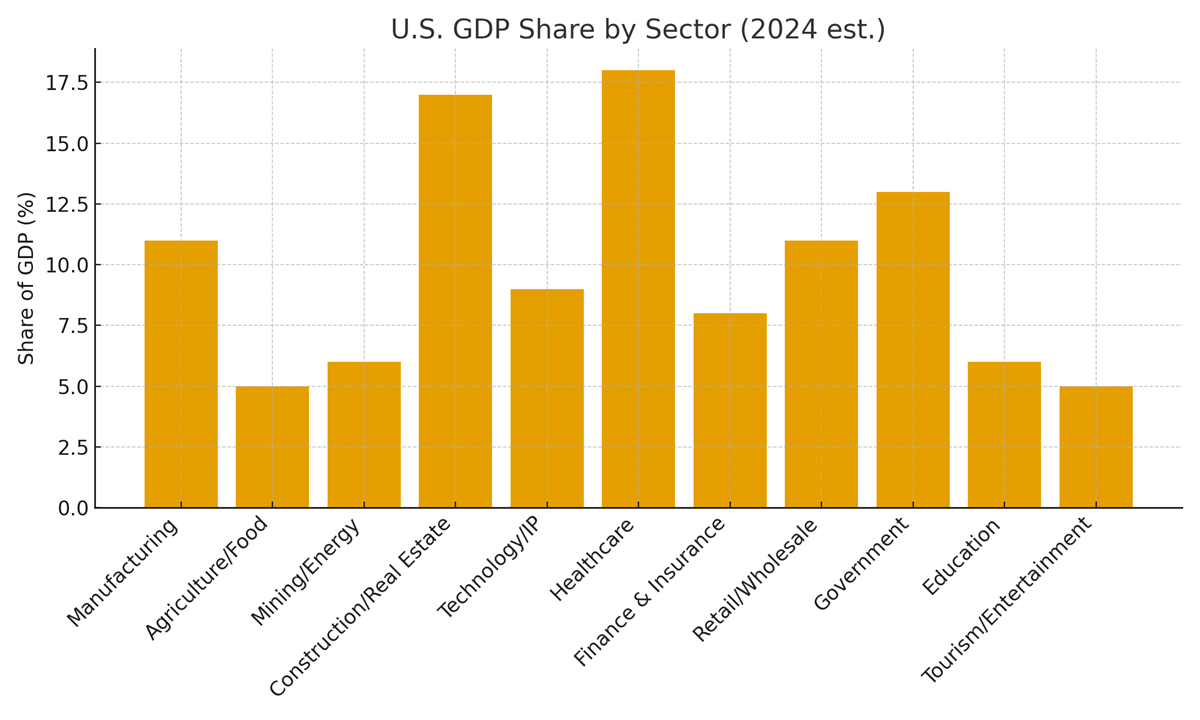
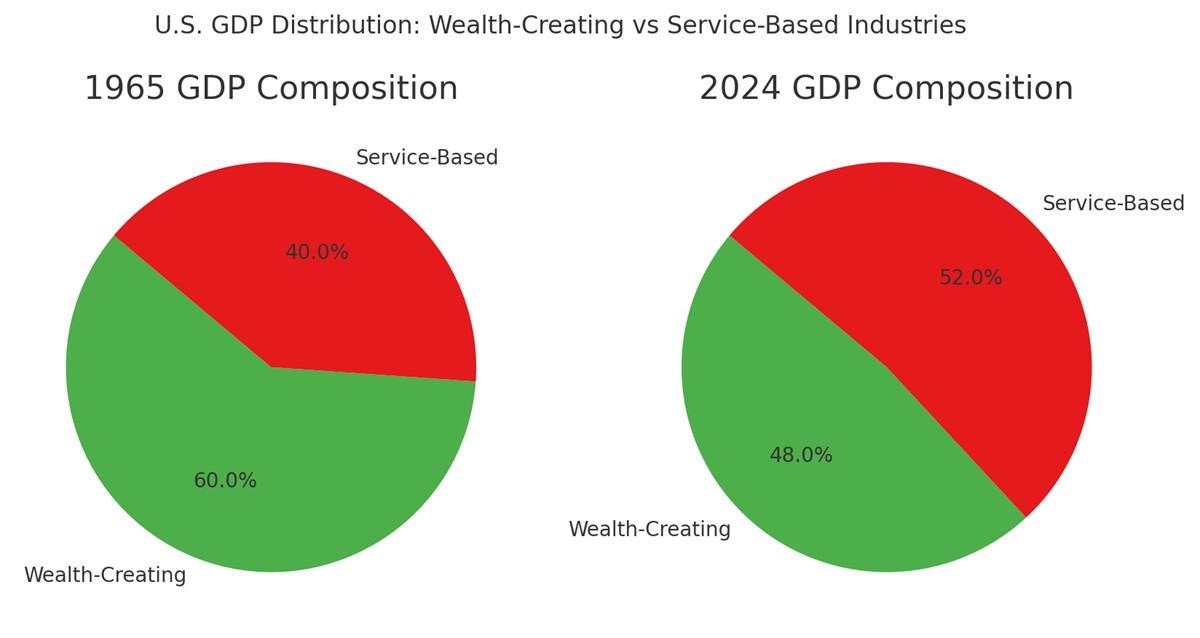
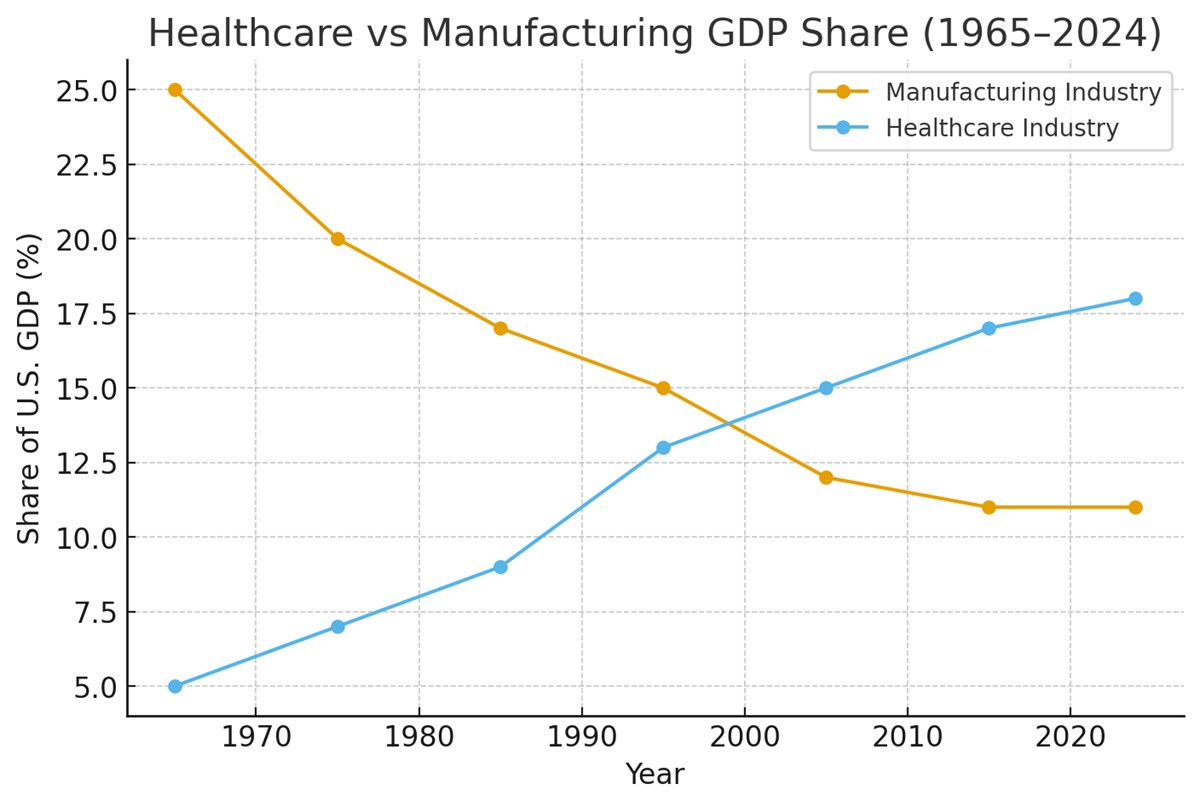
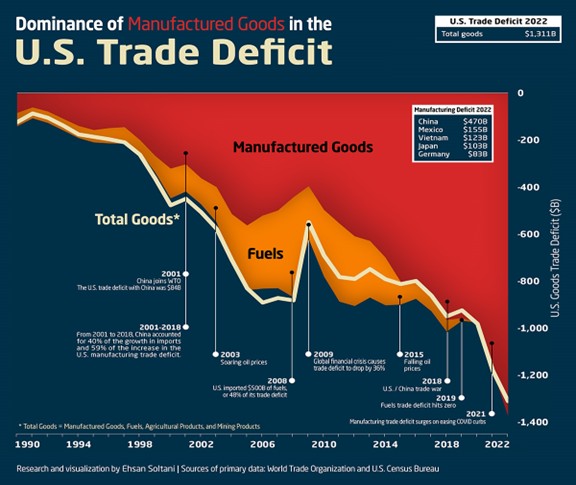
This article was originally published by IssueWire. Read the original article here.

